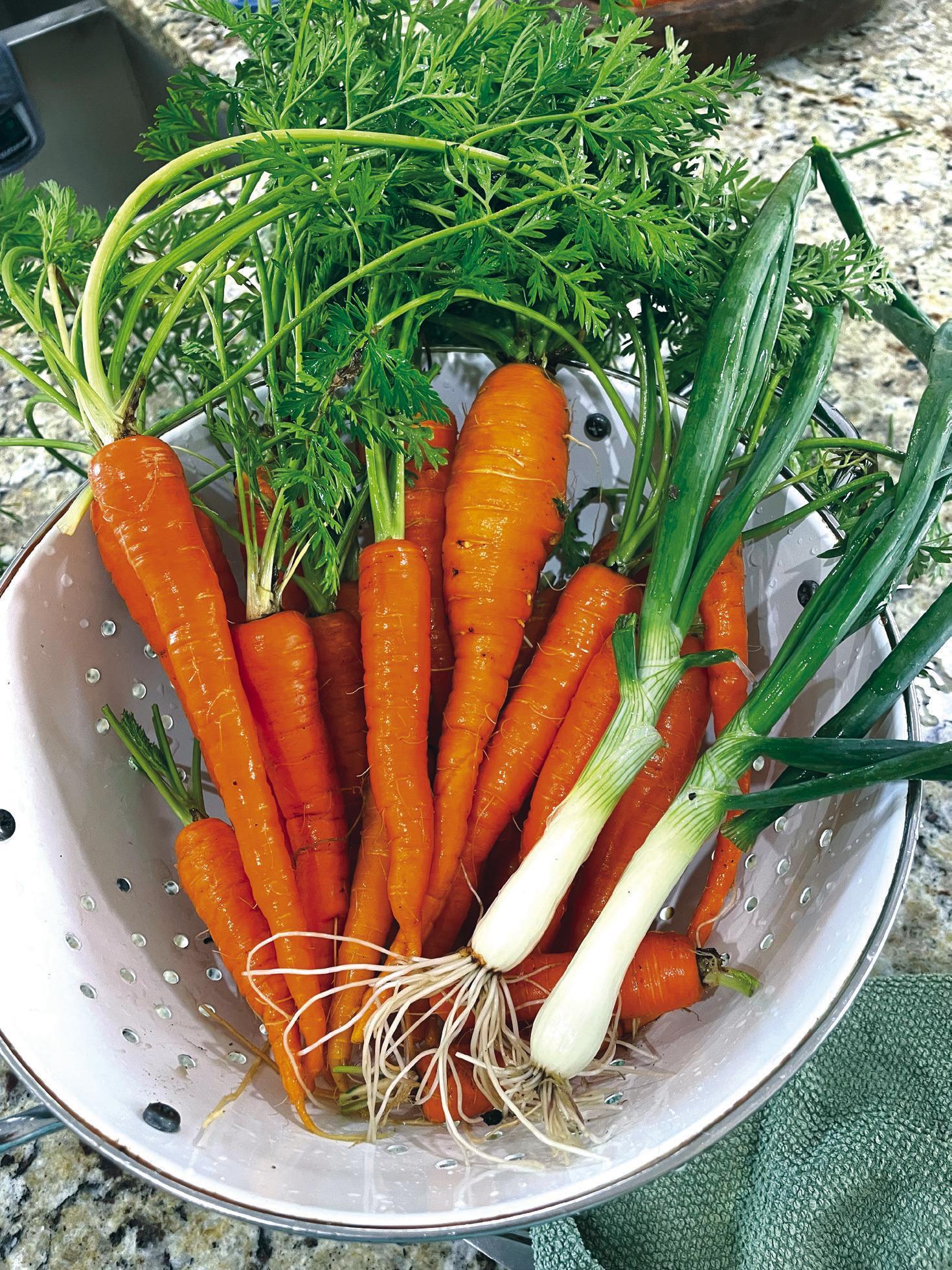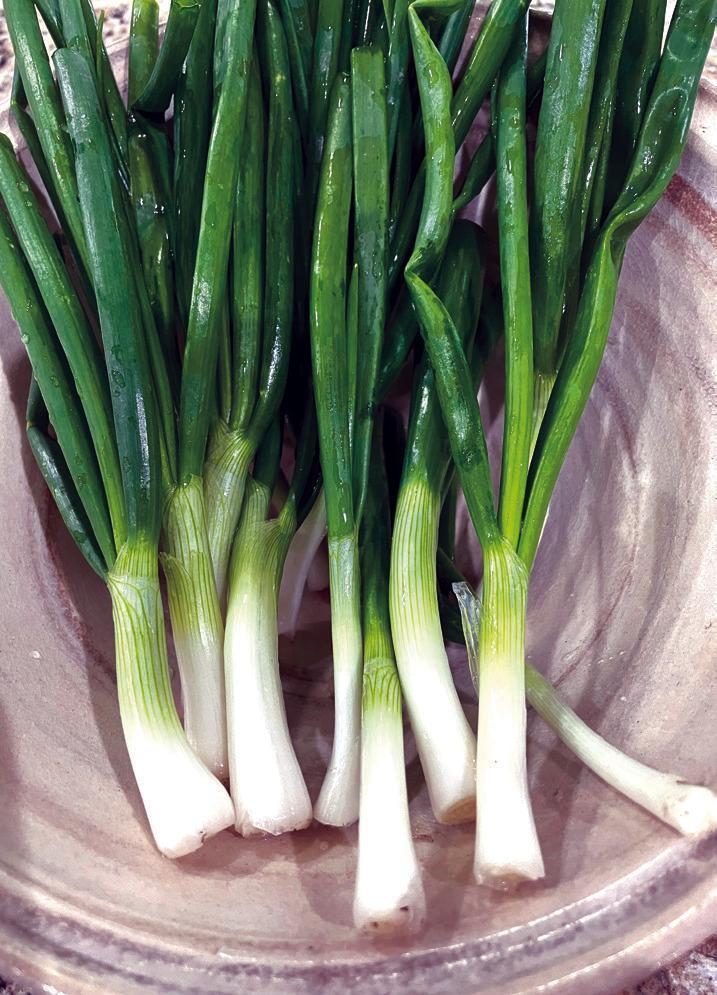
For those who planted carrots in their gardens last winter, now is the time to pull them in preparation for the spring.

April is the time for thinning green onions down to three inches apart.
Photos by Sue Maastricht
Gardening Goodness
I love April. With the weather heating up comes the planting of the warm-weather plants in your garden. April is the month to go for it. If you did not want to gamble on the weather in March, now is the time to plant all your warm-season transplants and seeds that you have not yet put in the ground.
First, harvest the last of your winter crops. They will get stressed by the high temperatures, and pests love a stressed plant. My spinach survived the winter, and it was delicious, but when the 80-degree daytime temperatures and warm nights were consistent, I pulled it. If you planted carrots last winter, pull your carrots now and also thin your onions to three inches apart. I planted my onions closer together last December just so I could thin them now for green onions. I also left the winter herbs in my vegetable garden to flower, as the flowers bring the honeybees into the garden. Then I will let the cilantro go to seed for coriander and for replanting next year.
Before adding new plants, make sure to clean up any debris in the garden which may contain insects. Then work the soil eight inches deep to break it up and add organic matter to the soil. If you planted bean seeds earlier, plant another row now to keep them producing.
When the soil reaches 70 degrees, you can plant warm weather vegetables like peppers. If you did not plant seeds, take the Texas A&M list of the varieties that grow the best in Central Texas and head to your local nursery to buy transplants. There are many pepper varieties to choose from, sweet or hot, that are perfect for this area. Two of the sweet peppers that grow well in Central Texas are Big Bertha and Bell Tower. Two of the hot peppers are Jalapeno and Long Red Cayenne. They need at least six hours of sun a day.
Remember, your transplants may have been in a protected environment, so you will need to harden them off. After that, fertilize the area, then put your pepper transplants in the ground. Space them 1.5 feet apart. When you fill the hole, do not cover the roots deeper than they were in the pot you took them from. Make a sunken circle around the pepper. It will keep the water from running away from your pepper plant. Slow deep watering is best.
Now watch your garden grow.
Now is the time to plant all your warmseason transplants and seeds that you have not yet put in the ground.











